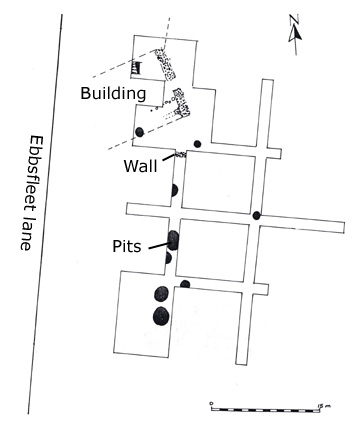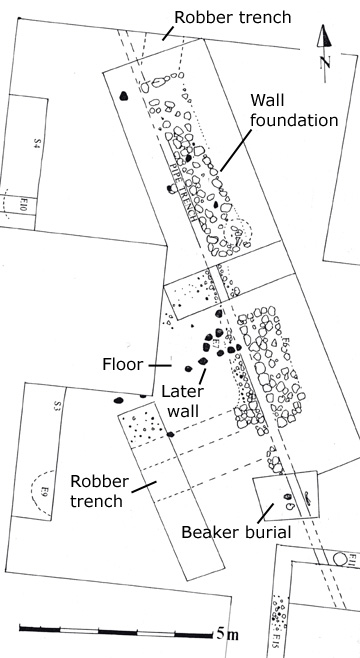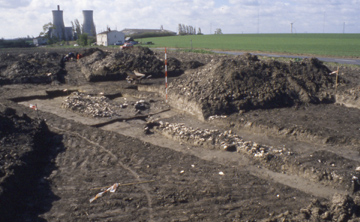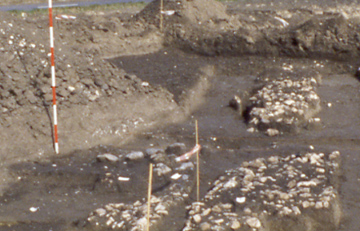
Return to Introduction
Display Contents
The Site
The Building
Later Wall


The site
The
Roman building at Ebbsfleet was discovered during an evaluation before
the development of a golf course on Cottington Hill, Ebbsfleet.
The building was located to the east of Ebbsfleet Lane near its
intersection with Cottington Lane, an ancient pathway.

The building
The building remains consisted of a length of wall foundation composed of hard white limestone nodules. A return was seen in the western end of the foundation but this petered out in a robber trench. At the northern end a robber trench appeared to deviate toward the north east. Patches of a floor of decayed mortar set with flat smooth pebbles were found within the area framed by the angle of the walls.

Overlying
the wall foundations within the presumed interior of the building was
a black sandy loam deposit containing burnt pottery, calcined chalk and
masses of Oyster shells, bones and pot sherds in the upper 10cm. A coin
of early fourth century date was found within the deposit.

A
few pits containing material dating to the end of the second
century
were encountered in the trenches excavated to the south of the building.

Later wall
A second later wall foundation of water rolled flints overlay the debris within the building. This wall had been heavily damaged by ploughing.
A scatter of pot sherds, animal bones and oyster shell overlying the building remains were the first deposits encountered in the evaluation trenches.
No ceramic roofing materials, plaster or mortar structures which have associated with some of the other Roman buildings on Thanet were found on the site. It is likely that the structure represented at Ebbsfleet was either very heavily eroded by later cultivation or the building is of a lower status than those found at Minster or Stone Road.
D. R.J. Perkins 1990, Archaeological remains at Cottington Hill, Ebbsfleet, Ramsgate. Unpublished Trust for Thanet Archaeology Evaluation Report
Version 1 - 13.03.07

All
content © Trust for Thanet Archaeology